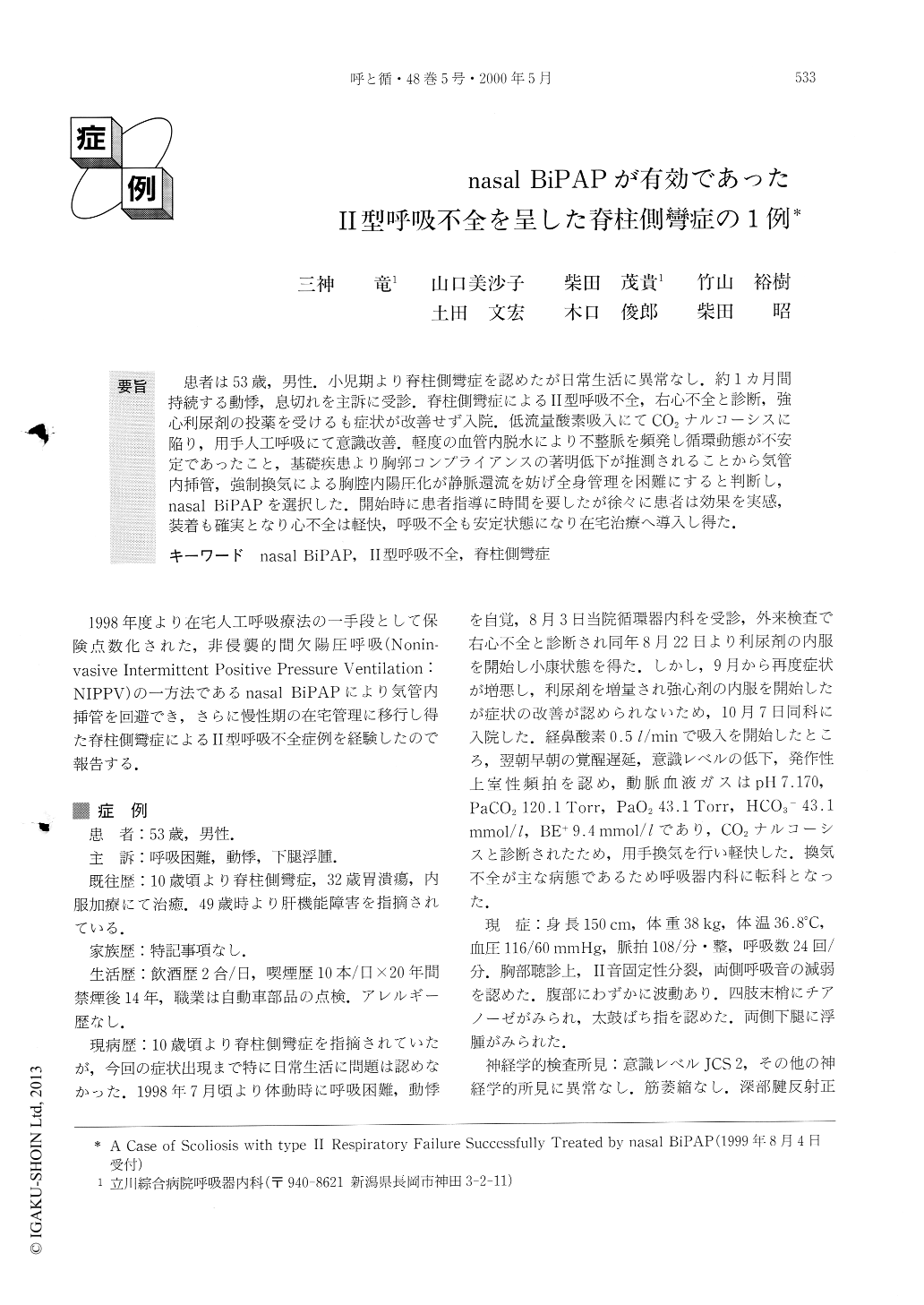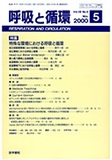Japanese
English
- 有料閲覧
- Abstract 文献概要
- 1ページ目 Look Inside
患者は53歳,男性.小児期より脊柱側彎症を認めたが日常生活に異常なし.約1ヵ月間持続する動悸,息切れを主訴に受診.脊柱側彎症によるII型呼吸不全,右心不全と診断,強心利尿剤の投薬を受けるも症状が改善せず入院.低流量酸素吸入にてCO2ナルコーシスに陥り,用手人工呼吸にて意識改善.軽度の血管内脱水により不整脈を頻発し循環動態が不安定であったこと,基礎疾患より胸郭コンプライアンスの著明低下が推測されることから気管内挿管,強制換気による胸腔内陽圧化が静脈還流を妨げ全身管理を困難にすると判断し,nasal BiPAPを選択した.開始時に患者指導に時間を要したが徐々に患者は効果を実感,装着も確実となり心不全は軽快,呼吸不全も安定状態になり在宅治療へ導入し得た.
A 53-year-old man, who had indicated scoliosis sincechildhood but had had no problem in daily life, came toour hospital on account of continuous palpitation andshortness of breath for a month. He was diagnosed ashaving right heart failure caused by scoliosis, and wasgiven cardiac diuretic, but as the symptoms did notimprove, he was admitted to our hospital.
After admission, he succumbed to CO2 narcosis at 0.5l/min oxygen supply, and was resuscitated by manualartificial respiration. Then he was given nasal BiPAP.The reasons for this treatment were instability of circu-lation and fragility of lung compliance. Even slightdehydration gave rise to arrhythmia with high fre-quency. If he had been intubated and had startedmechanical ventilation, the treatment would have beenmore difficult because of disturbance of venous circula-tion due to intrapleural positive pressure. He required along guidance time after start-up of nasal BiPAP, buthe gradually felt the good effect of the treatment and hecontinued wearing his nasal mask. After that, cardiacfailure was improved and respiratory failure wassteadied, and he was allowed to continue his therapy athome.

Copyright © 2000, Igaku-Shoin Ltd. All rights reserved.


